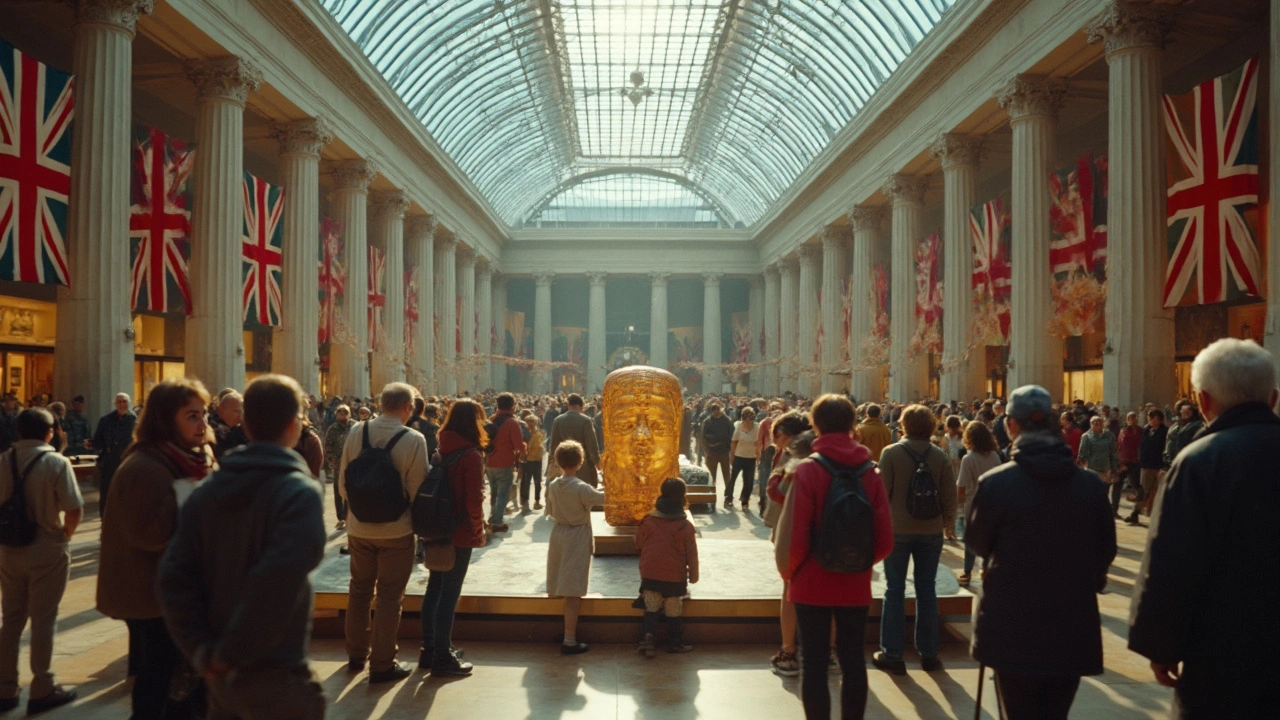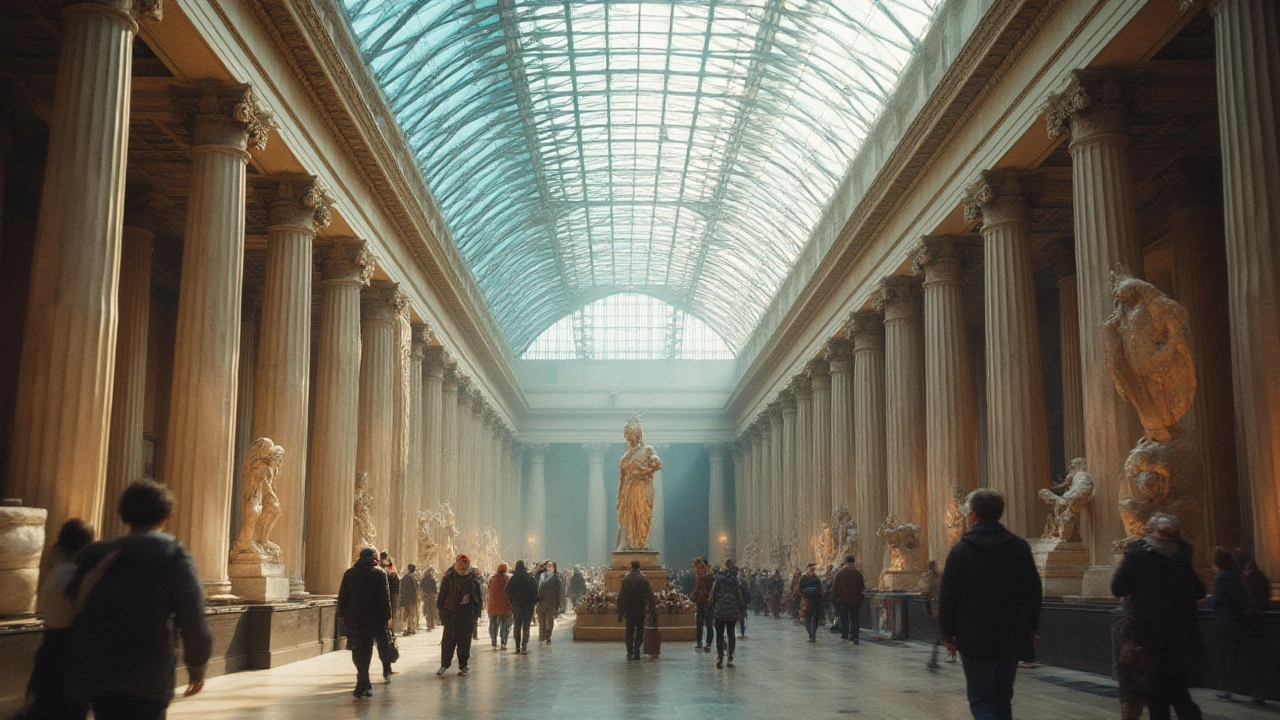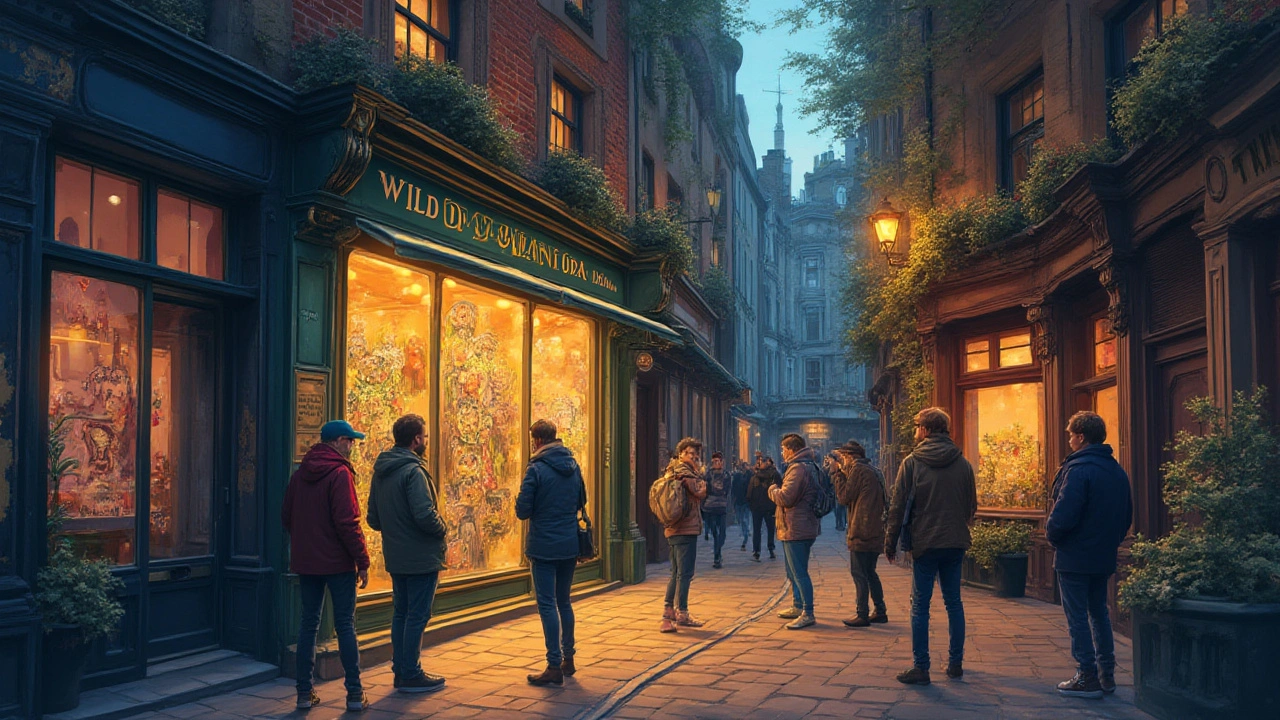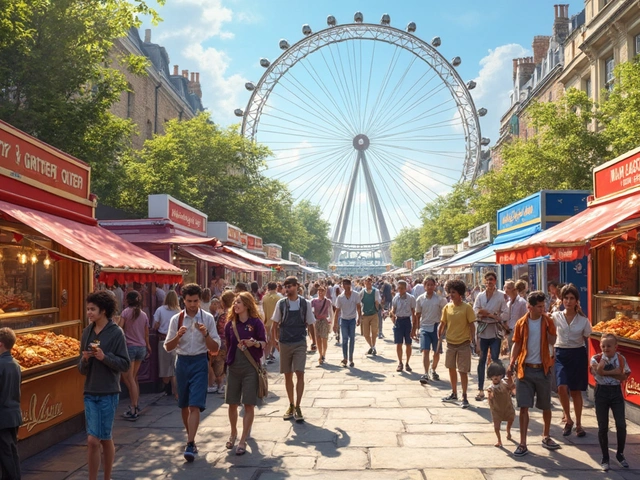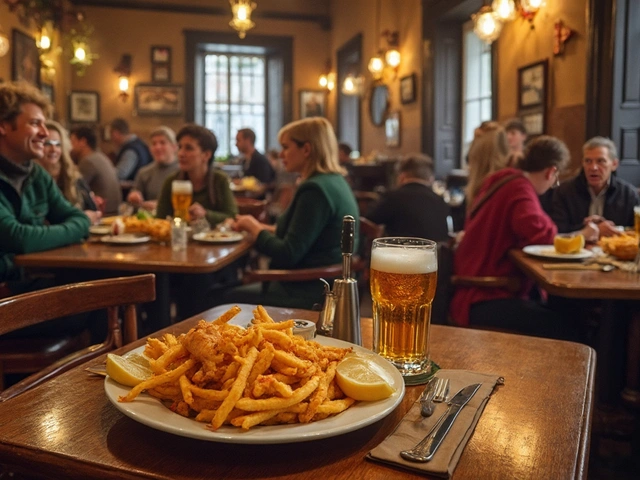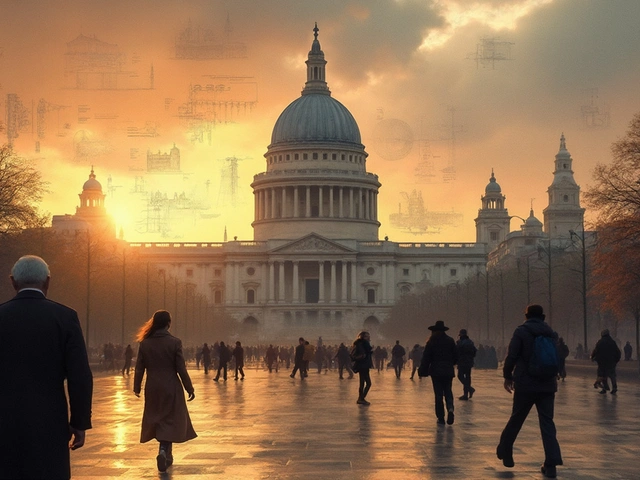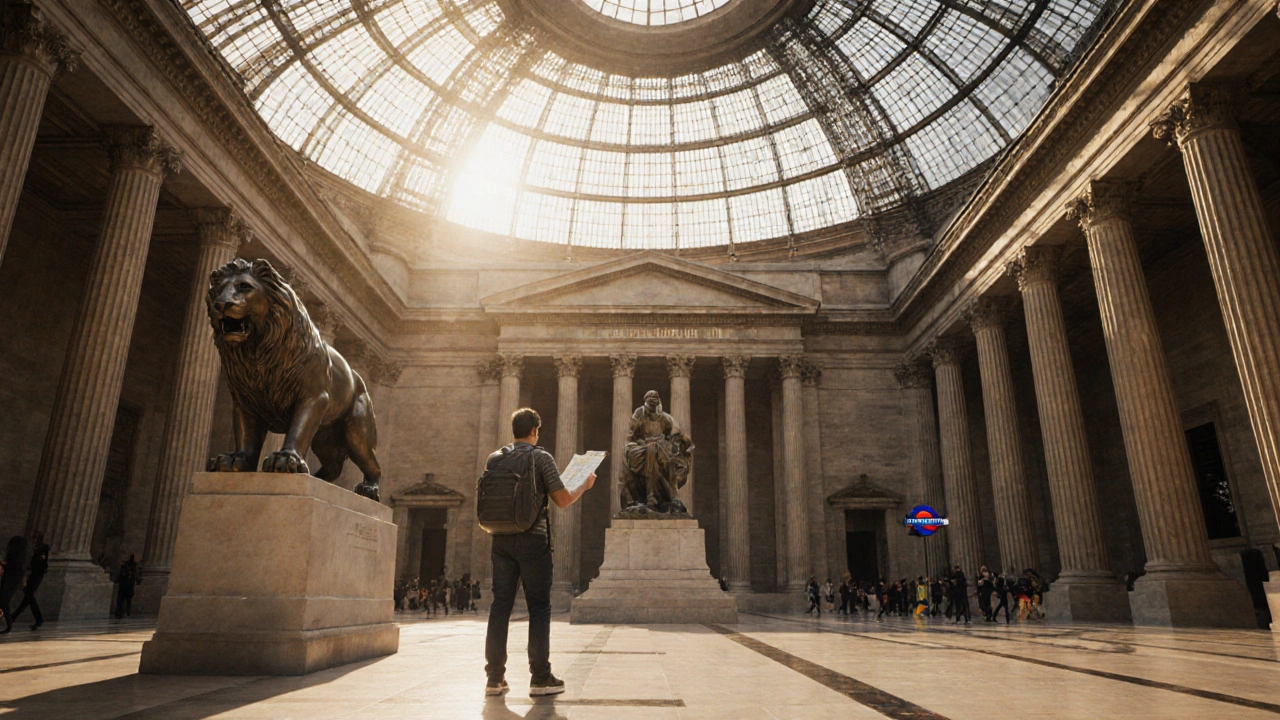
Quick Takeaways
- Free entry for the permanent collection, but special exhibitions cost extra.
- Best way to get there: Tube Central Line to Holborn or Russell Square.
- Grab a bite at nearby Dishoom or the museum’s Great Court Restaurant for a true London flavour.
- Use the Britannia audio guide for a 90‑minute self‑paced tour.
- Check the museum’s calendar for late‑night ‘Friday Lates’ and family workshops.
When you wander British Museum is a world‑class museum in the heart of London that houses over eight million works spanning two million years of human history. It’s the kind of place that feels like a cultural odyssey every time you step through its grand doors, especially for locals craving a fresh take on a familiar landmark.
Why the British Museum Still Matters to Londoners
For anyone living in or visiting London, the museum is more than a tourist stop; it’s a living classroom. From the bustling streets of Shoreditch to the historic lanes of Bloomsbury, the museum mirrors the city’s diversity. Its free‑entry policy aligns with London’s public‑service ethos, letting commuters pop in after work or families swing by on a rainy Saturday without worrying about ticket prices.
Must‑See Treasures and Their London Connections
While the entire museum is a treasure trove, a few key objects have sparked worldwide fascination. Here’s a quick guide to the highlights and how you can experience them like a local:
- Rosetta Stone - The key to deciphering Egyptian hieroglyphs. Look for the Rosetta Stone in the Egyptian sculpture gallery. Nearby, the British Library frequently hosts related talks - perfect for a post‑visit deep‑dive.
- Elgin Marbles - Classical Greek sculptures from the Parthenon. Spot them in the Greek and Roman antiquities wing. After admiring the marbles, stroll to St. James’s Park for a picnic; the park’s proximity makes it an easy transition from ancient art to green space.
- Egyptian Mummies - Including the iconic Mummy of Katebet. The Climate‑controlled gallery offers a chilling look at ancient funerary rites. Pair the visit with a late‑night tea at Fortnum & Mason on nearby Piccadilly for a truly British experience.
- Assyrian Lion Hunt Reliefs - Dramatic stone panels depicting royal hunts. These are displayed in the Mesopotamian gallery, close to the museum’s massive Great Court. The court’s glass roof is a favorite selfie spot for locals heading out to Camden Market afterward.
- Enlightenment Gallery - Showcasing the Age of Reason with scientific instruments and curiosities. The gallery’s interactive displays make it a hit with school groups and curious adults alike. Don’t miss the nearby Bloomberg café for a quick espresso before your next stop.
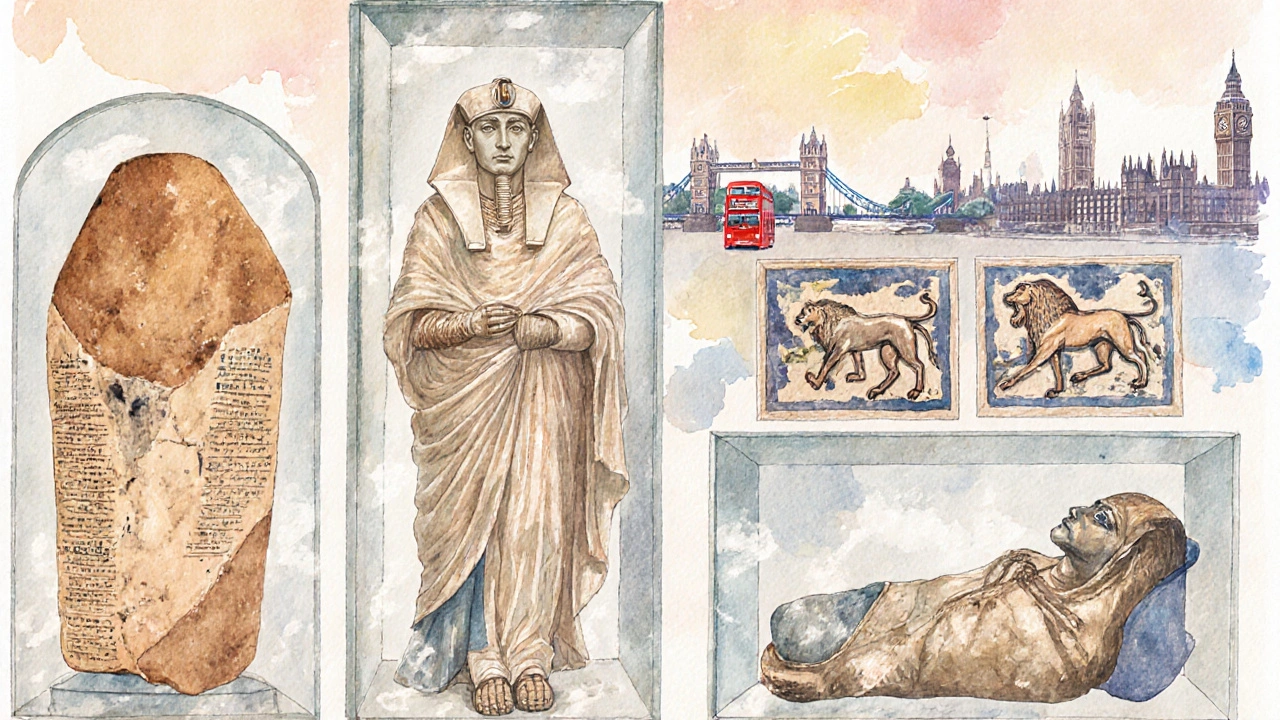
Practical Tips for a Smooth Visit
- Get there stress‑free: Take the Tube to Holborn (Central, Piccadilly, or Northern lines) or Russell Square (Piccadilly). Both stations have step‑free access, useful for families with strollers.
- Timing matters: Arrive early (around 9:30am) to beat the rush, especially on school holidays. Friday evenings after 5pm offer a quieter atmosphere and occasional live music.
- Food stops: For a quick bite, the Great Court Restaurant serves seasonal British dishes sourced from local farms. If you fancy Indian street food, Dishoom Covent Garden is a five‑minute walk away.
- Audio guide: Rent the Britannia audio guide for £5. It’s narrating in over 10 languages and includes a custom London‑themed route that highlights the museum’s connections to the city’s maritime history.
- Accessibility: Wheelchair loans are free at the information desk. Elevators connect all the main floors, and tactile maps are available for visually impaired visitors.
Comparing Your Visiting Options
| Experience | Cost | Duration | Best For |
|---|---|---|---|
| Standard Gallery Access | Free | 2‑3hours | Casual visitors, families, students |
| Britannia Audio Guide | £5 | 2‑3hours (self‑paced) | First‑time tourists, history buffs |
| Special Exhibition (e.g., ‘Egyptian Treasures’) | £15‑£25 | 1‑2hours | Art lovers, scholars |
| Friday Lates (with live music) | Free (drinks extra) | 3‑4hours | Young professionals, night‑owls |
| Guided Family Workshop | £8 for 2‑person family ticket | 1hour | Parents with children 5‑12 |
Connecting the Museum to London’s Cultural Scene
After you’ve soaked up the ancient world, why not keep the cultural momentum going? London’s art and food districts sit just a stone’s throw away. The West End theatres are a 15‑minute walk, perfect for catching a play after an evening visit. If you’re a music lover, the nearby Southbank Centre hosts free lunchtime concerts on Wednesdays.
For those who enjoy shopping, the historic Leadenhall Market offers boutique stores and craft stalls - an ideal spot to pick up a souvenir that reflects both the museum’s heritage and London’s design scene. And don’t miss the seasonal pop‑up events in Covent Garden, which often feature live reenactments of historical moments inspired by museum collections.
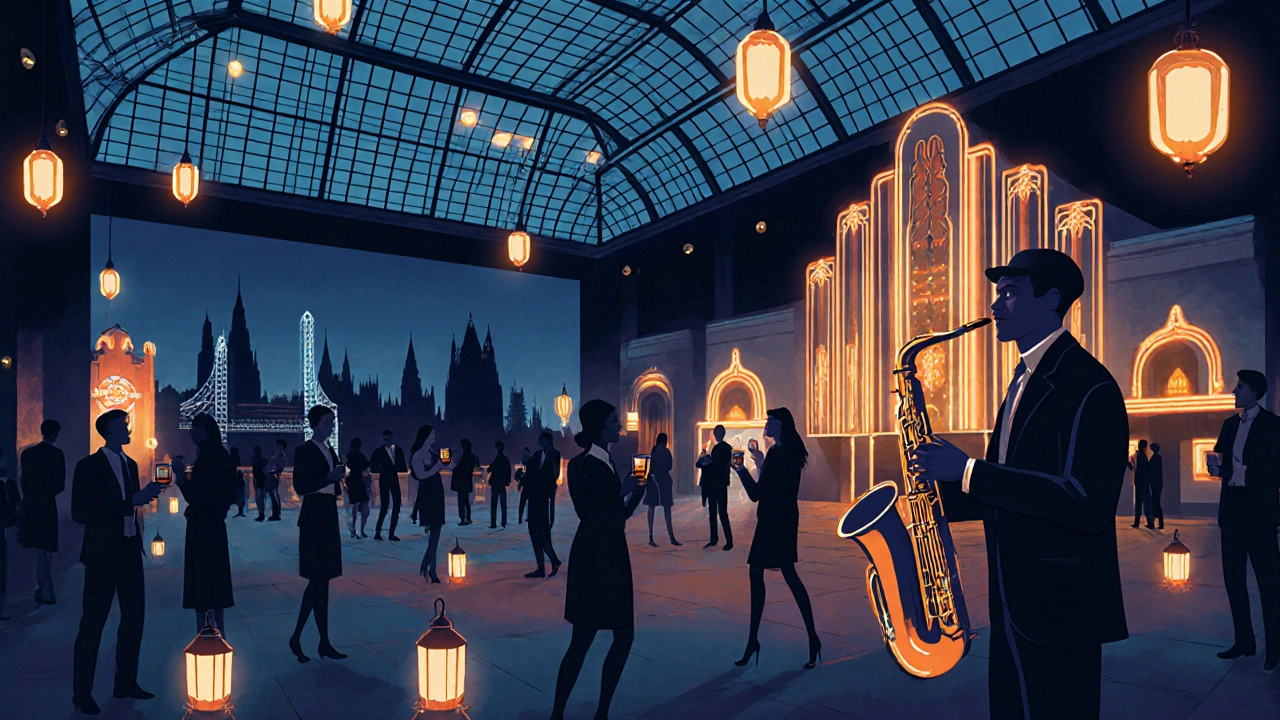
Hidden Gems Inside the British Museum
Even regular Londoners can discover new corners:
- The Reading Room - Although now a public space, it still retains its scholarly ambience. Grab a quiet moment with a coffee from the museum’s café and feel the echo of past intellectual giants.
- Sir Richard Wallace Collection - A lesser‑known decorative arts display featuring 18th‑century French furniture. It’s tucked behind the medieval gallery and often missed by crowds.
- Hidden courtyards - Small atriums scattered throughout the building provide peaceful retreats, perfect for a break between galleries.
Planning Your Next Cultural Odyssey
Whether you’re a Londoner looking for a weekend adventure or an expat eager to dive deeper into British history, the British Museum offers a flexible canvas. Use the museum’s mobile app to set personalized routes, check real‑time waiting times, and book tickets for special exhibitions. Pair your visit with a river walk along the Thames, stopping at Southwark Cathedral for a moment of reflection.
Frequently Asked Questions
Do I need to book tickets for free entry?
No, you can walk straight in for the permanent collection. However, for popular special exhibitions it’s wise to reserve a timed entry slot online to avoid queues.
What are the best transport options from central London?
Take the Tube to Holborn (Central, Piccadilly, Northern lines) or Russell Square (Piccadilly). Both stations are a short walk away. Buses 8, 25, and 59 also stop nearby, and there are plenty of Santander Cycle docking stations on Great Russell Street.
Are there any family‑friendly activities?
Yes, the museum runs weekend workshops for children aged 5‑12, the ‘Family Trails’ app, and Saturday storytelling sessions in the Egyptian gallery.
Can I eat inside the museum?
The Great Court Restaurant serves seasonal British fare, and there are several cafés offering coffee, sandwiches, and vegan options. Outside food isn’t allowed inside exhibition rooms.
What are the opening hours during summer?
From late March to early October the museum is open daily from 10:00am to 5:30pm, with extended hours until 8:30pm on Fridays (Friday Lates). It closes on 24‑25 December and 1 January.
Comments (7)
- Nadya Gadberry
- October 11, 2025 AT 22:53 PM
The British Museum stands as a silent chronicle of humanity's collective memory, each artifact whispering stories of empires long vanished. Walking through the Great Court feels like stepping into a temporal vortex where ancient stone meets modern glass. The free‑entry policy subtly reminds us that culture should be a public right, not a commodity for the privileged. One could argue that the museum's layout is a deliberate lesson in humility, coaxing visitors to confront both triumphs and tragedies of our past. In the end, the experience is as much about personal reflection as it is about appreciating curated history 😊.
- Grace Koski
- October 12, 2025 AT 01:40 AM
Indeed, the museum's architecture itself becomes a dialogue between eras; the juxtaposition of neoclassical façades with contemporary exhibitions invites contemplation, and the strategic placement of cafés nearby encourages lingering discussions, fostering community connections. Moreover, utilizing the audio guide offers a layered narrative, enriching the sensory immersion, and providing context that transcends mere visual appreciation. As someone who values cultural exchange, I find the proximity to venues like Dishoom especially delightful, creating a seamless culinary‑historical journey for visitors seeking both knowledge and nourishment.
- Pearlie Alba
- October 12, 2025 AT 04:26 AM
From a semiotic perspective, the Rosetta Stone operates as a linguistic keystone 🗝️, unlocking hieroglyphic semantics and challenging modern epistemology. The Elgin Marbles, meanwhile, epitomize the contested narratives of provenance, prompting debates that echo through curatorial praxis. Engaging with the Enlightenment Gallery offers a tactile immersion into the Age of Reason, where empiricism meets aesthetic curiosity, a synergy that resonates with interdisciplinary scholars. Ultimately, these collections serve as catalysts for interdisciplinary dialogue, bridging archaeology, philosophy, and even quantum theory, if one chooses to extrapolate.
- Tom Garrett
- October 12, 2025 AT 22:13 PM
When you consider the British Museum's sprawling galleries, it's impossible not to feel the weight of centuries pressing down on the polished floors, a pressure that seems almost conspiratorial in its persistence. The very act of strolling past the Assyrian Lion Hunt Reliefs can feel like a covert transmission of ancient power structures, subtly reinforcing hierarchies that modern society claims to have dismantled. One might wonder why certain narratives dominate the exhibition space while others are relegated to dim corners, a selective memory that aligns suspiciously with institutional agendas. The audio guide, though marketed as an educational tool, often glides over uncomfortable truths, offering sanitized versions of colonisation and cultural appropriation. It's as if the museum curators have signed a silent pact with unseen benefactors, ensuring that the most palatable histories are amplified while the rest are muted. In the quiet moments near the Reading Room, the whisper of turning pages seems to echo the suppressed voices of those whose artifacts were removed under the guise of preservation. Yet, the public remains blissfully unaware, absorbed in the aesthetic beauty of marble statues, never pausing to question the provenance of the very stone beneath their feet. The fact that entry remains free for permanent collections might be an intentional façade, diverting scrutiny from the financial undercurrents that sustain these grand institutions. Each ticket, each donation, each corporate sponsor subtly feeds a cycle that perpetuates a particular version of history, one that conveniently aligns with prevailing power structures. While the museum proudly advertises its educational mission, the underlying currents suggest a more calculated manipulation of collective memory. The supposed neutrality of the exhibition halls belies a curated agenda, meticulously crafted to reinforce dominant cultural narratives. Even the timing of Friday Lates, with its ambient music and free drinks, feels like a strategic distraction, lulling visitors into a sense of communal festivity while deeper critiques remain unvoiced. The hidden courtyards, though tranquil, are mere interludes in a larger performance designed to showcase the institution's benevolence. In this light, the British Museum emerges not just as a repository of artifacts, but as a sophisticated instrument of cultural engineering, subtly shaping public perception through curated experience. Ultimately, the onus lies on visitors to peel back the layers of presentation, to question the silences, and to recognize that what is displayed is often a negotiated truth, not an absolute one.
- Eva Ch
- October 13, 2025 AT 01:00 AM
Moreover, the museum’s commitment to accessibility underscores its dedication to inclusive cultural stewardship.
- Gerald Matlakala
- October 13, 2025 AT 03:46 AM
The timing of special exhibitions, coinciding with geopolitical events, cannot be dismissed as mere coincidence; the alignment appears orchestrated, perhaps hinting at deeper machinations. Observers have noted that funding sources often originate from entities with vested interests in the narratives presented, raising questions about editorial independence. While the museum publicly celebrates its educational mission, the underlying financial entanglements suggest a subtle steering of public consciousness.
- Vaishnavi Agarwal
- October 14, 2025 AT 02:00 AM
It is disheartening to see such a venerable institution perpetuate a sanitized version of history, conveniently glossing over the moral complexities of colonial acquisition. As custodians of collective memory, we owe it to future generations to confront these uncomfortable truths head‑on, rather than wrapping them in the comforting veneer of "cultural heritage". By embracing transparency and fostering critical dialogue, the museum can transform from a silent complicitor into a beacon of ethical stewardship.

